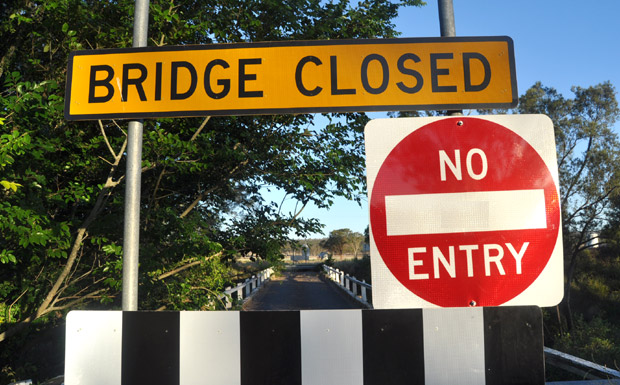
July 27, 2014
by Dafyd Martindale
At southburnett.com.au we hear a lot of claims about the South Burnett’s rates. There’s no doubt people aren’t happy paying the road levy. And a councillor only has to receive a 1 cent pay rise for the predictable whingeing to begin.
Let’s face it. No one likes paying rates. And over the past few years, rates have been going up (thank you Federal and State Governments for transferring responsibilities to local governments while reducing funding at the same time).
Everyone would also like rates to go down.
But how does the South Burnett REALLY stack up against other councils in Queensland?
Are we being ripped off? Or should we stop thinking the grass is always greener somewhere else?
* * *
Figures produced by the Queensland Department of Local Government show that in 2013-14, the South Burnett Regional Council’s rates were actually among the lowest in Queensland for the level of services the council provides.
The information quoted below comes from the department’s LG Information Service, which collects data from all Queensland councils each year to produce State-wide Council statistics.
We used this public data to run the South Burnett up against other regional councils in order to see how our region compares.
And while the Department warns that direct comparisons may not be entirely fair, given that individual councils face different local circumstances, we think the results are worth examining.
Note: We prepared this comparison with no assistance from the South Burnett Regional Council.
* * *
South Burnett Rates Compared With Neighbouring Councils
For each shire, LG Information provides information for the local government area’s lowest and highest general rates (listed per town/area).
In a comparison of the South Burnett with the five neighbouring councils who share its borders (Somerset, Toowoomba, Western Downs, North Burnett and Gympie), the South Burnett’s rates are mid-range.
The South Burnett’s lowest rates listed (at Wondai) are just $397 a year higher than the cheapest on offer ($1523 at Jandowae in the Western Downs) and a full $522 a year lower than the most expensive ($2965 per year in Toowoomba).
Surprisingly, the South Burnett’s most expensive rates ($2443 a year in Kingaroy) are still $150 a year cheaper than those levied by Gympie Regional Council in Kilkivan ($2593).
* * *
South Burnett Rates Compared With Other Regional Councils
A comparison of the South Burnett’s rates with 10 other regional councils spread from the Gold Coast to Cairns shows they’re now among the lowest in regional Queensland, too.
In general, the South Burnett’s lowest rates are cheaper than those faced by almost all residents in coastal cities.
They’re also lower than those levied on Logan and Redland residents on the fringes of the Brisbane metropolitan area.
And when it comes to the South Burnett’s highest rates (in Kingaroy), they’re the cheapest of all.
* * *
South Burnett Rates Compared With Metropolitan Councils
Finally, the South Burnett’s rates also stack up well against densely populated metropolitan areas where costs – and public facilities such as swimming pools and libraries – are shared among a much larger population base.
It costs Wondai residents just $5 a year more to live in the South Burnett than if they lived in Deception Bay. Wondai’s rates are also cheaper than Brisbane, the Sunshine Coast or Ipswich.
And while Kingaroy’s rates are definitely higher than all metropolitan areas, they’re not all that much higher given the big disparity in population (Brisbane has a population of more than 1 million; Moreton 406,000; Sunshine Coast 251,000; and Ipswich 180,000. The South Burnett has around 33,000 residents, and only 18,000-odd ratepayers).
* * *
As noted before, we prepared this comparison on 2013-14 rates. The South Burnett Regional Council handed down its 2014-15 Budget on Friday. So this year, South Burnett ratepayers will face:
- A minimum general rate of $632
- A minimum sewerage charge of $530
- A waste collection charge of $145
- Minimum water access charges of $445, and
- Additional charges – including the $200 road levy – of $335
This adds up to an average annual rates bill of $2097 for town residents who receive all services, and somewhat less for rural ratepayers who don’t.
All other Councils we have checked also have had 2014-15 general rates rises of a similar percentage as the South Burnett, so we believe the comparisons in this report are still valid.
* * *
Notes On Comparisons With Neighbouring Councils::
- This table directly compares the lowest and highest average rates levied by each of the five councils the South Burnett shares borders with using data supplied by LG Information.
- For the purpose of fair and equal comparison, the total figure shown for each Council is the Total Average Rates & Charges Per Annum figure supplied by LG Information before any rates discount is applied, since rates discounts vary from nil to 15 per cent in different shires.
- This table does not include the Cherbourg Aboriginal Shire Council because that council does not collect rates.
Notes On Comparison With Other Regional Councils:
- This table directly compares the lowest and highest average rates levied by eight other Queensland regional councils, along with Logan and Redland in the Brisbane metropolitan area, using data supplied by LG Information.
- These councils were chosen because all of them supply the same mix of services (ie water, sewerage, waste collection) that the South Burnett Regional Council supplies
- For the purpose of fair and equal comparison, the total figure shown for each Council is the Total Average Rates & Charges Per Annum figure supplied by LG Information before any rates discount is applied.
Notes On Comparison With Metropolitan Councils:
- Residents in metropolitan councils like Brisbane, Ipswich, Moreton and the Sunshine Coast now have their water and sewerage services supplied by State-owned corporations Unitywater or Queensland Urban Utilities.
- These corporations bill residents quarterly for these services, which no longer appear on council rate notices.
- Because of this, the figures shown in this table comprise the rates levied by each of these five councils (shown in the Department Of Local Government’s figures) plus the annual access charges levied by Unitywater or Queensland Urban Utilities (as shown on their websites)
External links:
- LG Information– 2013-14 Residential Rating introduction, 2013-14 Residential Rating and 2012-13 Residential Rating (Excel spreadsheet)
- Queensland Urban Utilities
- Unitywater






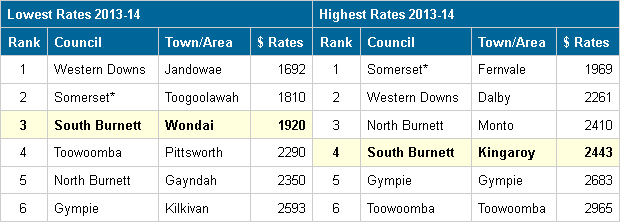
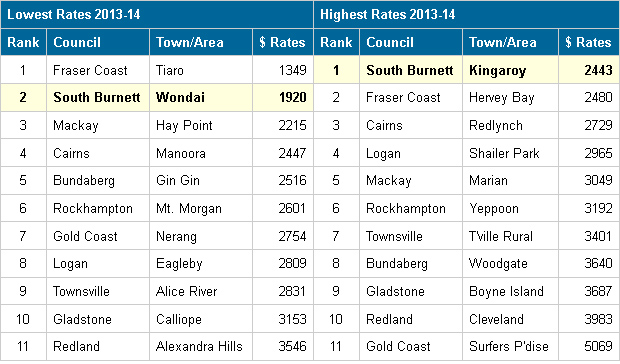


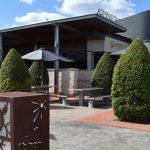
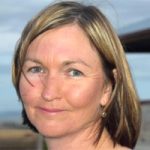

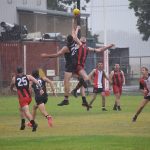
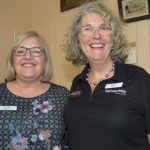











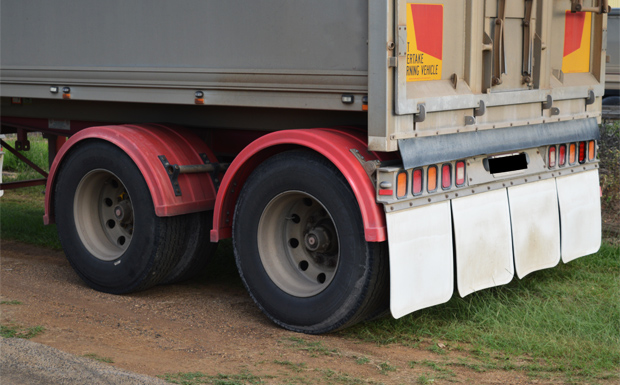
Congratulations on producing this report. I for one was guilty on thinking our rates in the South Burnett were high. It is really good to be able to compare ours with other centres. It is also great to see some positive journalism, instead of the negativity that the media usually presents.
This surely then means we could introduce recycling for a fee. We live in Kingaroy, don’t have sewerage, mains pressure water or kerbing and channelling!
Marc – because you don’t have it you don’t pay for it! Only those connected to water & sewage pay for it. As for the K&C that request can be put in for Kingaroy Heights and be discussed alongside other capital road requests such as sealing of worn road shoulders and realigning of dangerous corners.
Damian,
The paying doesn’t worry me.
It’s the lack of services that’s the issue.
I live just out of Kingaroy and have a friend who lives at Oakwood, Bundaberg. His rates are lower than mine and have been for years, he also has more land, but like me no sewerage. Makes me wonder, I’m still not convinced.
Don’t forget, Nanna, that rates also depend on the valuation of your land, which is not set by Council. LG Information shows shire-wide averages which we have used for our “lowest / highest” comparison but rates levied on individual properties will ultimately depend on land valuations. So to be fair, you would need to also compare the unimproved value of your land against the unimproved value of your friend’s land.
Exercises such as this do not allay public concerns about rates. Property rates are based on land values hence the difference between Kingaroy and Wondai. This evaluation system applies to all properties across Queensland. This comparison of land values as suggested here is not valid and differ according to location.
Water and sewerage charges fall into the same category, the size of these systems are not comparable. Wondai by far a smaller system in size compared to Kingaroy is being charged at the same rate. Blackbutt, Murgon, Proston and Nanango’s are smaller in size as are their systems, therefore costs are lower then Kingaroy regardless of population size.
Adding the $26 million for a new sewage plant, $4 million for a new water plant and the cost of water drawn from Tarong pipeline, this cost not released by council to the public, these costs can not be attributed to Wondai, Blackbutt, Murgon, Proston and Nanango’s town service costs.
Water access charges are to maintain the piping systems, again having no relevance cost to the size of systems within each town.
Jack: the only relationship property values bear to rates is that they’re used as a way to work out how to share the costs of running a system amongst the people who use it. It costs the same to purify water, treat sewage and collect waste in Kingaroy or Wondai as it does in Brisbane. The only reason metropolitan rates are a few hundred a year cheaper than ours is that bigger systems get some economies of scale.
And I don’t know where you get the idea that smaller systems cost less to run on a per-capita basis than bigger ones. The costs of maintaining infrastructure don’t get lower if the infrastructure is smaller – a blown pipe on a two mile long pipeline costs the same to fix as one on a twenty mile pipeline.
For better or worse, the South Burnett Regional Council decided six years ago to put all the region’s water, sewerage and waste collection systems into single pools, and then share the costs region-wide. This significantly advantaged all the small towns (Blackbutt, Wondai, Proston etc) and significantly disadvantaged Kingaroy, where rates have just about doubled over the last six years.
I didn’t see you griping about this when you were getting the benefit of it. So don’t gripe about it now you have to pay a little more to replace one of the system’s plants. Your local plants, too, will need replacing sometime. Very likely, sometime in the next 10 years. And then we’ll all be paying for that.
Are you suggesting that land values have no bearing on rates if so then why is there such a large variation,a water front block at the Gold Coast is the same value as one at Menerambi I don’t think so.
Economy of scale is equivalent to population verses the size of the system
There is a marked difference between building servicing and maintaining 100 klm of pipe line compared to 20 klm.The size of water and sewerage plant,pumps,even pipe diameters reduce accordingly,this alone is a significant reduction in infrastructure costs.On going maintenance expenditure to smaller systems also reduced simply because there is less to maintain.Water and sewerage treatment costs reduce by volume of production chemical usage and waste disposal costs are less by volume.
As to your claim of gripeing Rod under your scenario Kingaroy residence can only embrace the separation of combined infrastructure systems as it is to their advantage to do so,are you not concerned for the well-being of Kingaroy’s residence.
Jack: I think even you would agree that a block of land at Kilkivan costs a lot less than a block of land in Kingaroy (about 60% less on average, according to realestate.com.au – but go Google it yourself). Yet last year, Kilkivan’s average rates were higher than Kingaroy’s. Why? Because as I said yesterday, the *only* relationship property values bear to rates is that they’re used as a way to work out how to share the costs of running a system amongst the people who use it.
What I mean by that is that in Australia we traditionally charge the rich more than the poor (not just for rates, but for most Government services). So if you have a high-value block on Nob Hill, you can expect to pay a bit more in rates than if you have a low-value block in Bogan Valley. That system applies pretty much everywhere. It’s what makes Australian socialism great.
In the case of Gympie Shire, the total costs of running that Shire are higher than the South Burnett’s. So the way they’ve split up their rates bills, Kilkivan residents pay a lower charge than Gympie residents because – in the context of Gympie Shire – Kilkivan property values are lower than Gympie’s. Even so, the rates bill for a Kilkivan resident is still higher than a Kingaroy resident overall because they live in a costlier Shire.
And exactly the same thing happens in the South Burnett. Kingaroy blocks have a higher value than blocks at Proston, so Kingaroy residents pay higher rates. You might not like it, but it’s the Australian way.
I do understand the Kingaroy Chamber of Commerce and Industry’s reluctance to accept that rates and charges need to reflect the actual costs of service delivery to outlying towns in the Shire. Amalgamation has delivered a substantial windfall for business in Kingaroy as local government purchasing shifts – with centralization of power – primarily from other towns and businesses across the Shire.
All smaller communities amalgamated with dominant regional centers vent grievances over disproportionate rating systems being implemented by the amalgamated council disadvantaging them because value for money returned to these areas substantialy decreases.
The South Burnett is no exception. As funding gravitates to Kingaroy this stops capital normally spent in outlying communities reaching those areas. Major projects undertaken in Kingaroy (ie new sewage and water treatment plants) further drain resources, adding costs not attributable to other towns villages and rural communities as their services are not used by these areas.
As you can see, your argument caries little weight when all factors are accounted for. The loss to these communities by far outweighs any perceived distant future gain presented to them via amalgamation advocates.
Jack: last year we all found out Blackbutt has been getting massively subsidised by the rest of the region ever since amalgamation and the true costs of running that town’s small sewerage, water and waste collection schemes are almost triple what residents pay. Now Blackbutt is getting another $3 million filip this year (on top of its $1-plus million annual subsidy for water, sewerage and waste collection) to install the basic kerbing and drainage that Nanango Shire Council never built because it couldn’t afford to.
Similarly, Yallakool was closed for 16 months between May 2007 and September 2008 because its sewerage system blew up and Murgon Shire Council didn’t have the $600,000-plus it needed to get it fixed. This threw the entire Shire into a depression and put a lot of Murgon workers on the dole queue.
So no, I don’t think smaller councils are a good thing that produce better outcomes, or that smaller systems can be run more cheaply than bigger ones. Local history clearly shows otherwise.
The reason for this spending in Bluckbutt is a direct consequence of very large protests organised by local residences to break away from South Burnett Regional Council and join a neighboring shire
The $600,000 was to replace a damaged bridge on the Byee Murgon road replaced by a covet stile crossing far less expensive then the bridge option if memory serves me.
Murgon sewage plant was upgraded or should I say a significant amount of new development added to that plant in the late 1980s [Murgon sewage system did not fail or blew up ]
Unemployment in Murgon 2007-2008 this being the closure of Murgon’s meat works with 350 employees directly made redundant with a flow on effecting of approximately a further 100-150 jobs lost with in the local area.
Murgon did carry a small debt into amalgamation. Murgon’s liabilities however pales into insignificance compared to Kingaroy this being in the order of $3 million to $4 million whilst Nanango and Wondai being essentially debt free.
Council facilities Yallakool caravan park did close but overall operations continued with minimal disruption as local caravan parks catering for any visitors to the dam.
Jack, here’s a press release the SBRC put out in August 2008 when it was about to re-open Yallakool (Google “yallakool reopening”). As you’ll see, the sewerage plant was closed because it failed to meet EPA requirements, not because Murgon Shire Council was building a bridge (there were problems with drinking water supplies at the Dam too, though this press release doesn’t mention those – but the ABC does if you want to look it up): http://www.southburnett.biz/pdfs/yallakoolPR.pdf
And if you go to Pandora’s archives at http://pandora.nla.gov.au/col/9261 and download the most recent annual reports available there for the old councils (roughly 2006/07), you’ll see Nanango was carrying a debt of around $1.4 million and Wondai $1.6 million just a year before the mergers happened. Murgon’s debt was much smaller, but that’s because it lost $6.7 million in 2006 and just under $1 million in 2007. Kingaroy’s debt at that time? $5.97 million. Which was about equal to the other councils on a per-capita basis (ie council debt per head of Shire population).
Murgon debt very small indeed Nanango debt $1,400,00 Wondai debt 1,600,000 combined just over $3,000,000 but upgraded or replaced their water and sewage treatment plants as needed unlike Kingaroy. Now add the cost of replacing Kingaroys sewage plant $26.000.000 and Kingaroy’s water treatment plant $4,000,000 to this debt of $5,970,000 allowing say a $10,000,000 grant reduction and $3,000,000 extra for inflation [the combined debt of Murgon Wondai and Nanango], in the financial year 2006/7 a debt of $22,590.000 is the result. Kingaroy’s debt liability is almost 4 times higher if this work was carried out pre-amalgamation as it should have been. Now the full cost of this shall we say convenient oversight is now revealed, severely financially effecting every rate payer in the Shire. This is regardless of being a user of these facilities. A debt enveloping rural and town rate payers alike with the long term effects of this convenient oversight felt by all for many years to come.
Yallakool is a tourism orientated caravan park and not connected to Murgon’s reticulation systems Murgon’s sewage plant did not explode. Yallakool tourism orientated caravan parks closure did not restrict recreational boating and fishing activites which continued unabated, the dam did not close. Accommodation could be had in already existing facilities with in easy driving distance to the dam. Not reactivating Yallakool tourism orientated caravan park at a cost of $600,000 to Murgon shire council was a shrewed financial decision indeed.
Correspondence on this issue is now closed.